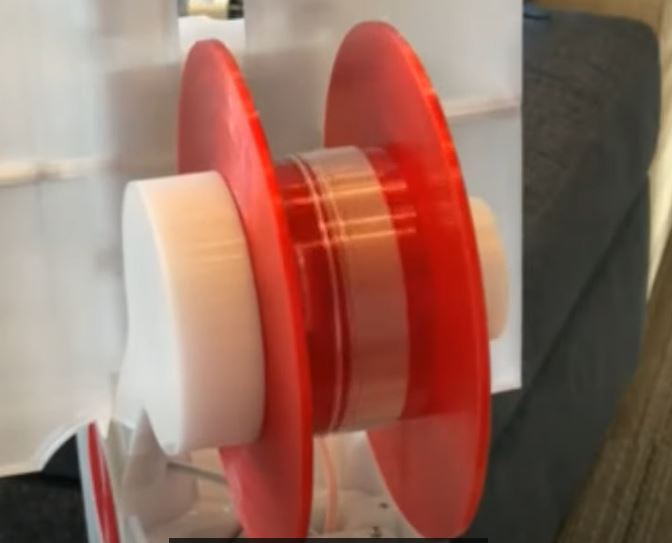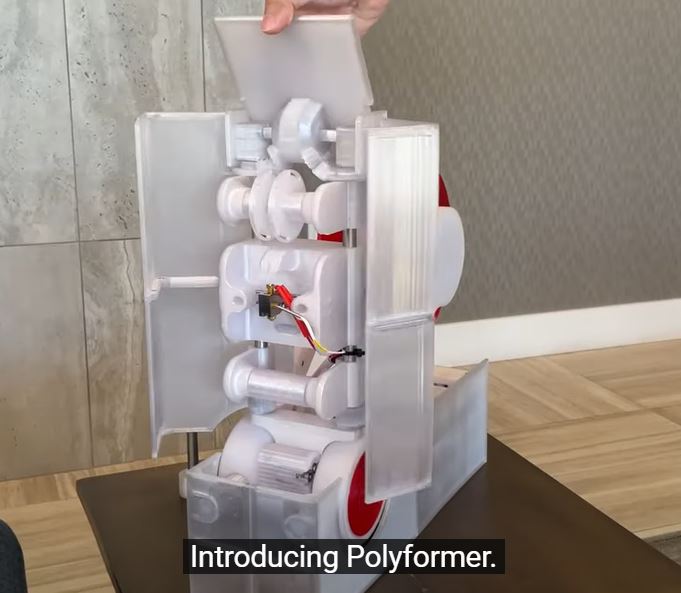My first Dyson vacuum had a name: The Revenge Dyson. When my ex-husband and I broke up, he spent some of his settlement on a Dyson vacuum. While we were married he thought a Dyson was a frivolous expense. Of course he did – he didn’t vacuum!
Now, he had a Dyson so I got a Dyson. But my machine never lived up to the Dyson reputation. I decided, half-jokingly, it was because I’d purchased it out of spite. I got rid of it and years later I bought another Dyson. This one has no name or negative vibes attached to it. And it’s working like a charm.
The vacuum’s inventor, James Dyson, lives the classic rags-to-riches story. And in addition to enjoying the spoils of being a multi-billionaire, Dyson sponsors the James Dyson Global Sustainability Award. The 2022 winners have made a surprising decision about their invention. They’re literally giving it away.
You’re probably somewhat familiar with 3D printing, the type of printing that can make anything from a child’s doll to pieces of a house. Where a regular printer uses paper, these machines use plastic filament for their creations. Think of filament like thread for a sewing machine. Without it, the machine is useless. In some parts of the world where 3D printing could be a game-change, filament is too expensive for anyone to buy.
McMaster Engineering grad Swaleh Owais and his business partner Reiten Cheng invented a machine called the Polyformer that turns ordinary plastic bottles into filament. They’ve made the rare decision to not take out a patent on it. So, because it’s open source, anyone is welcome to create their own version of the machine without paying a royalty. This is huge news in nations where items like tools and machine parts are outrageously expensive. Now, people can make their own.
The concept is brilliant. Find a plastic bottle. If it isn’t round, inflate and heat it to puff out the ridges. Use a special tool that comes with the machine to cut the bottle into a continuous strip. Feed that strip into the machine where it’s heated and cooled quickly as it’s shaped into filament. The strip winds onto a spool, like thread, that perfectly fits a 3D printer. That is it.

The Polyformer machine not only tackles two problems at once – plastic waste and the supply of affordable 3D printer filament – its inventors are also providing an example of generosity by sharing the technology at no cost. The machine is affordable to make at $150 and – wait for it – can be 3D printed!
Environmentalists say two-thirds of all plastic bottles aren’t recycled. Not only will the Polyformer inspire people to collect bottles, they’ll get new life in something useful. Last week, as an example, Austin, Texas unveiled its first 3D printed neighborhood. While this project is separate from the Polyformer project, it shows the possibilities. These homes are sturdy and about 30% less expensive to build than traditional houses. They don’t use up trees or other natural resources. Now, just imagine if 3D printers were put to use on shelters for the homeless.
The machine has already been duplicated and is in use in, for example, Rwanda, where 3D printing materials are too expensive to even consider.
Greenpeace says, “every single piece of plastic ever made still exists”. That’s a disputed claim but it appears to have some roots in fact. Plastic simply doesn’t break down like organic materials. However, scientists have found a “superworm” that eats plastic and digests it. It loves to feed on styrofoam. I say, toss a few million into a landfill and let them go to work. (NOTE: I am not a scientist!)
Many plastic projects are underway. From converting it into jet fuel to making clothing out of recycled plastic materials. I have a pop-bottle tank top that is as soft as anything else I own. We tote our reusable shopping bags and carry a reusable water bottle. Saying no to plastic cutlery with takeout meals. There are so many ways to do our part.
More of this please, and less of billionaires buying social media properties. These young men give me hope for the future, for your children and your children’s children. They’re bettering peoples’ lives because it’s simply the right thing to do.
This 3-minute video shows how the Polyformer machine works. It’s so brilliant and yet so simple.


Many years ago I heard of a company who were taking used plastic pop bottles and turning them into carpets and the automotive industry has been using recycled plastics and even metals in vehicles. Two thumbs up for these students!
Kudos to those two students for doing their part in helping to save our environment. I’m glad James Dyson recognized their efforts and rewarded them.
The invention truly is a game changer, and the fact that there is no patent on it will hopefully encourage others to follow suit.
Very interesting read, Lisa. Thank you!
Fascinating. And inspiring!
Amazing! I’m so glad you share this story that has everything: ingenuity, generosity, optimism and a great Canadian story to boot! Thank you. It hurt me in Ajijic Mexico where I stayed recently with at the home of my sister, that they didn’t recycle. Somehow throwing all of the garbage in the same bag just feels so WRONG (because it is). Every step helps. This is incredible. E.
That would feel so wrong! I think back to all of the dog food cans we through in the trash when I was a kid. Yikes!